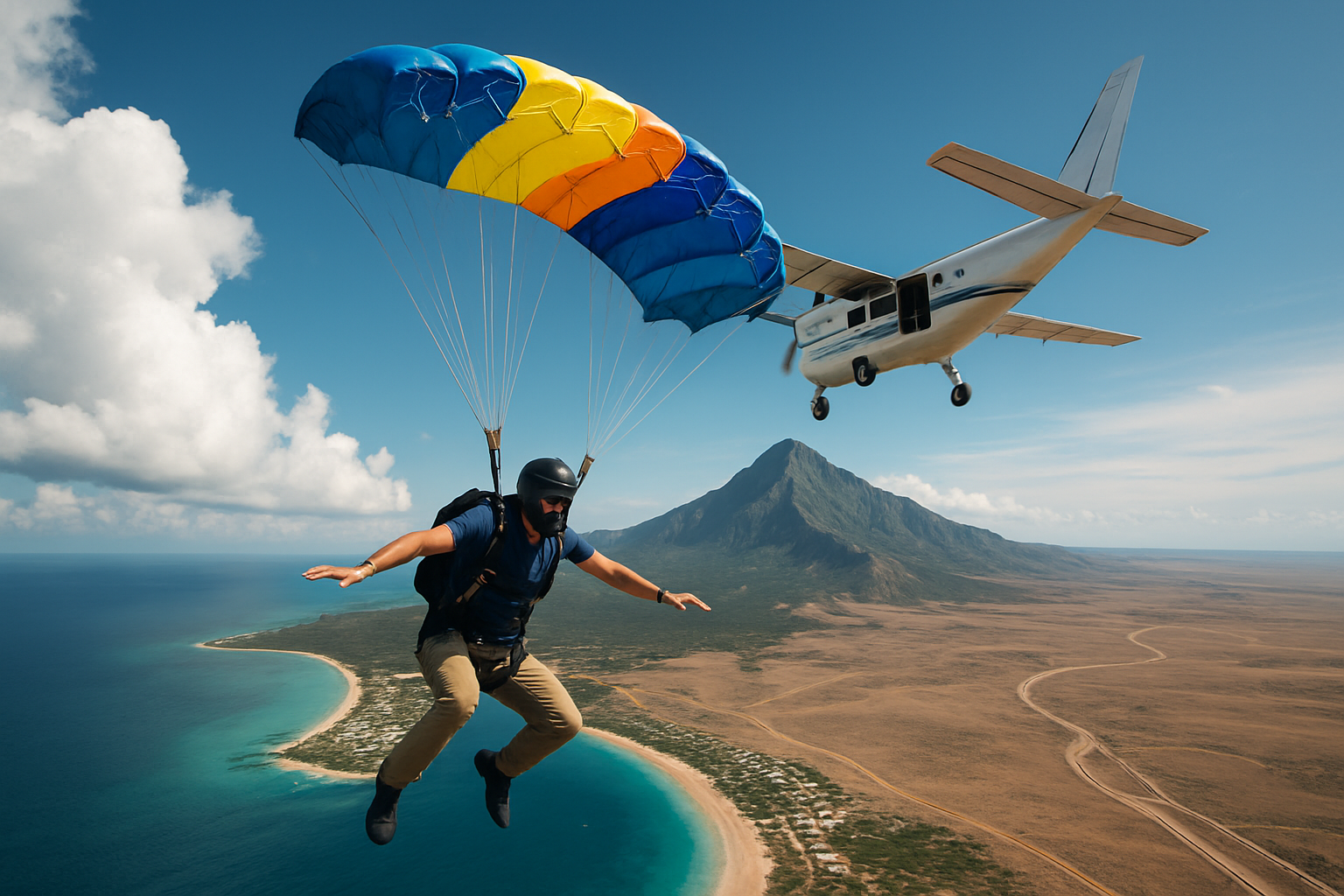Pedal-Powered Paragliding: The Ultimate Adventure Fusion
Soaring through the skies with nothing but a parachute and bicycle pedals may sound like a dream, but it's a reality for thrill-seekers embracing the emerging trend of pedal-powered paragliding. This ingenious blend of human-powered flight and traditional paragliding is revolutionizing the adventure travel scene, offering a unique perspective on landscapes and a thrilling eco-friendly experience. As travelers seek more immersive and sustainable ways to explore, pedal-powered paragliding is taking off as the next big thing in adventure tourism.

How Pedal-Powered Paragliding Works
At its core, pedal-powered paragliding utilizes a specially designed recumbent bicycle attached to a paraglider wing. The pilot sits in a comfortable, aerodynamic position, pedaling to generate thrust through a propeller connected to the bicycle’s drivetrain. This human-powered propulsion system allows for takeoff from flat ground, a significant advantage over traditional paragliding which typically requires a hill or tow launch.
Once airborne, the pilot can continue pedaling to gain altitude or maintain level flight, or simply glide using air currents like a conventional paraglider. The ability to switch between powered and unpowered flight offers unparalleled versatility, allowing adventurers to explore diverse terrains and weather conditions.
The Appeal to Adventure Seekers
Pedal-powered paragliding appeals to a wide range of adventure enthusiasts, from seasoned paragliders looking for a new challenge to cycling aficionados dreaming of taking their passion to new heights. The sport offers a unique blend of physical exertion, technical skill, and the sheer joy of flight, creating an experience that’s both physically and mentally rewarding.
One of the most significant draws of PPP is its accessibility. While traditional paragliding often requires specific geographic features for launch, pedal-powered rigs can take off from virtually any open space, opening up countless new locations for aerial exploration. This versatility has sparked interest among travel operators and adventure resorts, with some beginning to offer PPP experiences in previously untapped regions.
Environmental Impact and Sustainable Adventure
In an era where eco-consciousness is paramount, pedal-powered paragliding stands out as a remarkably green adventure option. With zero emissions and minimal impact on the environment, it embodies the principles of sustainable travel. The sport allows adventurers to experience breathtaking landscapes without leaving a carbon footprint, aligning perfectly with the growing demand for responsible tourism options.
Moreover, the quiet nature of PPP means minimal disturbance to wildlife and local communities, making it an ideal way to explore sensitive ecological areas. This aspect has not gone unnoticed by environmental organizations and national parks, some of which are considering PPP as a low-impact alternative for aerial surveys and eco-tourism activities.
Training and Safety Considerations
As with any extreme sport, proper training and safety measures are crucial in pedal-powered paragliding. Aspiring pilots must undergo comprehensive training that covers both paragliding techniques and the unique aspects of pedal-powered flight. This typically includes ground handling, flight theory, weather assessment, and emergency procedures.
Safety equipment is paramount, with pilots required to wear helmets, harnesses, and carry reserve parachutes. The design of PPP rigs also incorporates various safety features, such as quick-release mechanisms that allow for rapid separation of the bicycle from the paraglider in case of emergencies.
The Future of Aerial Adventure Travel
As pedal-powered paragliding gains traction in the adventure travel world, its future looks promising. Innovations in lightweight materials and electric-assist technologies are expected to make the sport even more accessible and versatile. Some visionaries in the field are already experimenting with tandem PPP rigs, potentially opening up the experience to a broader audience, including those with limited mobility.
The sport is also garnering interest from the competitive sector, with talks of PPP races and endurance challenges on the horizon. These events could further boost the profile of pedal-powered paragliding, attracting sponsors and media attention that could fuel its growth as a mainstream adventure sport.
Sky-High Insights: What You Need to Know
• PPP rigs typically weigh between 20-30 kg, making them transportable by car or even as airline luggage
• The average cruising speed of a pedal-powered paraglider is 20-30 km/h, with top speeds reaching 40 km/h
• Flight durations can range from 30 minutes to several hours, depending on pilot fitness and weather conditions
• Some PPP enthusiasts have completed long-distance journeys, with records of flights covering over 100 km in a single day
• The cost of a complete PPP setup is comparable to a high-end road bicycle, making it relatively accessible compared to other forms of powered flight
As the boundaries between different adventure sports continue to blur, pedal-powered paragliding represents a thrilling convergence of human ingenuity and the age-old dream of flight. It offers a unique perspective on our world, combining the intimacy of cycling with the freedom of soaring through the skies. For those seeking the ultimate adventure fusion, pedal-powered paragliding might just be the next big leap in experiential travel, promising unforgettable journeys and a whole new way to explore our planet from above.





